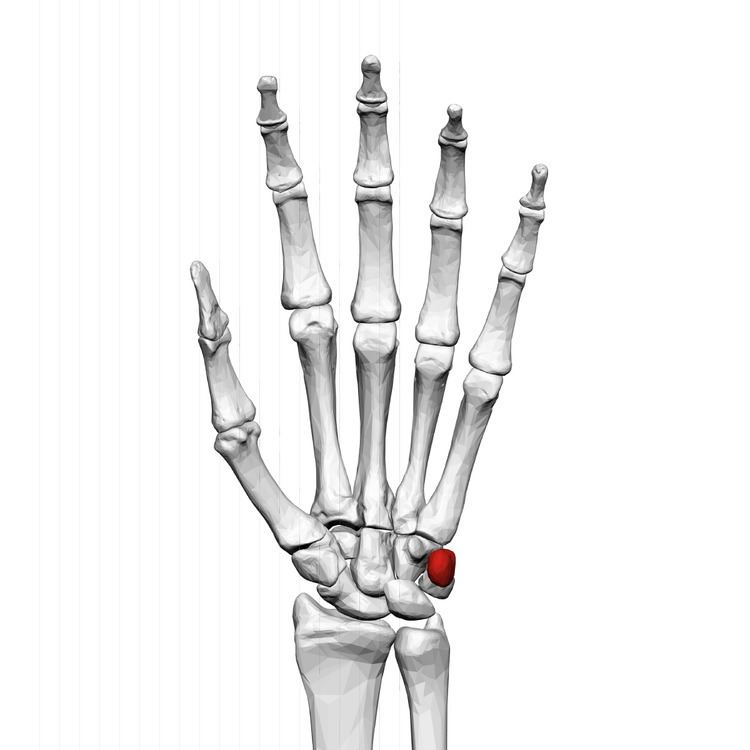Articulations triangular Dorlands/Elsevier o_07/12598620 | Latin Os pisiforme TA A02.4.08.007 | |
 | ||
MeSH A02.835.232.087.319.150.600 | ||
The pisiform bone (/ˈpaɪsᵻfɔːrm/ or /ˈpɪzᵻfɔːrm/), also spelled pisiforme (from the Latin pisifomis, pea-shaped), is a small knobbly, pea-shaped bone that is found in the wrist. It forms the ulnar border of the carpal tunnel.
Contents
Structure
The pisiform bone is a small bone found in the proximal row of the wrist (carpus). It is situated where the ulna joins the wrist, within the tendon of the flexor carpi ulnaris muscle.
It only has one side that acts as a joint, articulating with the triquetral bone. It is on a plane anterior to the other carpal bones and is spheroidal in form.
The pisiform bone has four surfaces:
- The dorsal surface is smooth and oval, and articulates with the triquetral: this facet approaches the superior, but not the inferior border of the bone.
- The palmar surface is rounded and rough, and gives attachment to the transverse carpal ligament, the flexor carpi ulnaris and the abductor digiti quinti.
- The lateral and medial surfaces are also rough, the former being concave, the latter usually convex.
Function
Unlike the other carpal bones, the pisiform is not involved in movement of the wrist.
Etymology
The etymology derives from the Latin pīsum which means "pea".
Other animals
As compared with apes, which have an elongated Pisiform, humans have a shorter pisiform bone. This is due to the loss of the single growth plate typically found in other mammalian pisiforms. This may be because of evolutionary benefits from having a shorter pisiform bone, including facilitating ulnar deviation of the hand, and preventing hyperextension of the wrist, actions that improve the action of clubbing.
